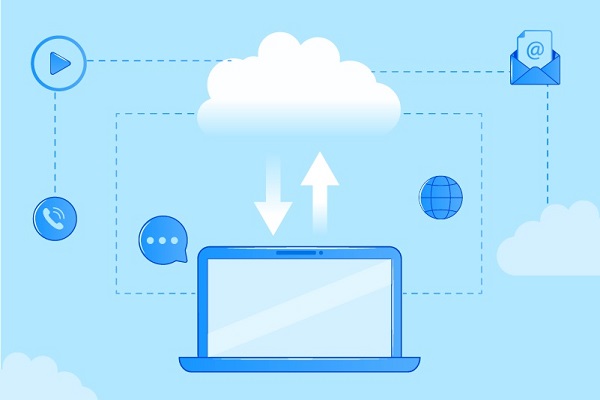Introduction
Cloud technologies are taking over. One of the latest trends in tech is SaaS. Quite a lot of people talk about it, but a few understand what it is. And while there is a lot of online materials devoted to explaining this term and its development process, lots of them are written in a specific tech-language that is difficult for understanding.
What is SaaS
Wikipedia gives us a rather extensive but also a quite technical-oriented explanation of what is SaaS. Meanwhile, all critical decisions about SaaS-service integration are taken by people that directly manage over businesses. Owners, chief executives, and other managers are the people we want to guide into understanding what SaaS is and how SaaS development works.
In short, the whole essence of the SaaS lays in the name itself – system as a service. The user does not buy a piece of software they later install. Instead, they receive a particular service they utilize for work, studies, or any other purposes. Such services are usually cloud-based, so users access them through a web-based or a lightweight, thin client – i.e., virtually.
How to use SaaS
SaaS-based software does not require a dedicated server, or configuration of hardware or operating system in any way – everything is handled by a service provider (developer). Users open up the browser, log into the app, and begin working.
The simplest example of a typical everyday SaaS-service is any kind of email service, e.g., Yahoo, Gmail, Hotmail, etc.
Users do not organize their own emailing service. Instead, they use the one offered by the SaaS platforms. Therefore, all efforts of putting up together the server, installing mail transfer agent (like Postfix), developing and configuring a mailing client, and then supporting the system nonstop are dealt with by the service providers.
Benefits of SaaS for the end-users and developers
The end-user greatly benefits from integrating a SaaS solution rather than it’s licensed counterpart. There are lots of reasons for it, but the main ones are:
- Updatable. Simple, fast, and frequent updates of the software without any additional fees.
- Fast. Allows to save working time otherwise taken to install and configure applications for each workplace.
- Consistant. A full-fledged multi-user solution with extensive opportunities for collaborate work on projects.
- Customizable. Often there is the possibility to pay for just the modules you need, and not all spectre of services provided.
- Flexible. Flexible payments depending on the required virtual storage space, number of users, the needed functionality.
- Convenient. Access via SaaS-interface from almost any point in the world, and different devices.
Not only the customers but also developers benefit from offering their product in a SaaS model:
- The product deploys easily on the client’s side.
- Continuous and stable source of income.
- Easily intervenes on the market with a free demo.
- Constantly improves following the web and end-user terminals.
SaaS cost-effectiveness
Developing a software infrastructure from scratch comes together with significant one-time and fixed costs.
Any up-to-date business cannot do without a specific set of tools. The licensed software is quite expensive, puts a list of requirements for hardware, paid integration and employee training, and quite often – paid support and upgrades.
On the other hand, by turning to cloud-based SaaS services, business would obviously benefit from saving money:
- Set in advance stable costs of maintaining the cloud infrastructure;
- Saving from the acquisition and maintenance of hardware equipment;
- Saving from the installation, integration, and deployment;
- Flexible payment system (monthly, quarterly, annually) that shapes a final fee out of the needed storage space, number of active users, and sometimes even a set of modules used.
However, quite often the integration of the cloud-based services requires additionally paid customization to match the needs of the exact business.
Dark side of the SaaS
The moon has two sides, and so does every new technology. One side is bright and innovational, while the other is dark and destructive. The software as a service is not an exception.
Despite a rather wide range of benefits, SaaS has several areas, where it lacks:
- Data Security. However, business data faces many processes and specialists, that while being disinterested in your personal data leakage, may still play a role in getting it to the wrong people.
- Ghosting Vendor. In case vendor finds their SaaS-based software showing low-returns, they may consider stopping the product support and then totally closing the service.
- Connection 24/7. The quality and speed of the cloud-based software, as well as the access to the business system in general, depends on the speed and stability of the connection.
- Customization. Contrary to the popular belief, not all SaaS services give customers the freedom to choose what modules to use, and what should be left out.
Summary
Surely, SaaS solutions are a strong opponent of desktop software. They are fast to deploy and scale up as businesses grow. However, the customization and security of stored data is an important issue to consider when looking for service providers.
Before integrating a SaaS service into your existing system think through all aspects. Are you sure about SaaS? Maybe what you actually need is your own customizable business system?
If you lack expertise in the area of software integration and possible traps and pitfalls, contact us for software consulting of development of custom software to suit your business.



